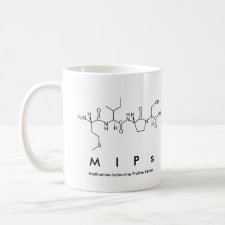
Authors: Zhu T, Xu D, Wu YG, Li J, Zhou MM, Tian T, Jiang Y, Li FT, Li GT
Article Title: Surface molecularly imprinted electrospun affinity membranes with multimodal pore structures for efficient separation of proteins.
Publication date: 2013
Journal: Journal of Materials Chemistry B
Volume: 1
Issue: (46)
Page numbers: 6449-6458.
DOI: 10.1039/C3TB20973C
Abstract: Molecular imprinting is an important tool for generating synthetic receptors with specific recognition sites. The resulting artificial receptor has been extensively used in areas that require molecular recognition. Nevertheless, various imprinted materials synthesized using conventional imprinting protocols have low binding capacities and slow binding kinetics because of difficulty in extracting the original templates and high resistance to mass transfer. The combination of molecular imprinting and nanostructured materials is expected to overcome such difficulties. In this work, template molecules were attached onto the electrospun fibers and by using electrospun nanofibers and attached molecules as sacrificial templates, surface molecularly imprinted membranes with bi-, tri- or tetramodal pore structures were fabricated in the absence or presence of SiO2 nanoparticles in the molecular imprinting precursor. As a demonstration, bovine serum albumin (BSA) and hemoglobin from bovine blood (bHb) were chosen as template molecules and imprinted electrospun affinity membranes with multimodal pore structures were successfully fabricated for protein separation. Compared with the membrane with a bi- or trimodal pore structure, the tetramodal membrane, which consisted of tubule channels, imprinted nanocavities on the inner surface of tube wall, gaps between tubes and pores in the tube wall left by SiO2 nanoparticles, exhibited a very favorable recognition property and efficient separation toward the template protein molecules in aqueous medium. In a two-protein system, the tetramodal membrane has also shown a very high specific recognition for the template proteins over the non-template proteins. Dynamic binding tests and reusability tests further revealed that tetramodal porous membranes had excellent selectivity, faster binding kinetics and good regenerability. These results indicate that in conjugation with the surface molecular imprinting technique the use of electrospun fibers as sacrificial templates could be used as an efficient strategy for development of high performance affinity membrane materials
Template and target information: protein, bovine serum albumin, BSA, hemoglobin from bovine blood, bHb



Join the Society for Molecular Imprinting

New items RSS feed
Sign-up for e-mail updates:
Choose between receiving an occasional newsletter or more frequent e-mail alerts.
Click here to go to the sign-up page.
Is your name elemental or peptidic? Enter your name and find out by clicking either of the buttons below!
Other products you may like:
 MIPdatabase
MIPdatabase









